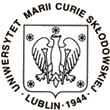

 |
 |
 |
|
Christian Beck
IReS, Strasbourg Nuclear Alpha-clustering, superdeformation and quasimolecular resonancesNuclear alpha-clustering has been the subject of intense study since the advent of heavy-ion accelerators. Looking back for more than 40 years we are able today to see the connection between quasimolecular resonances in heavy-ion collisions and extremely deformed states in light nuclei. For example superdeformed bands have been recently discovered in light N=Z nuclei such as 36Ar, 40Ca, 48Cr, and 56Ni by gamma-ray spectroscopy. The spectroscopy of strongly deformed shapes in N=Z nuclei has also been the domain of charged particle spectroscopy, and our experimental group at IReS Strasbourg have studied a number of these nuclei with the charged particle multidetector array ICARE at the VIVITRON facility in a systematical manner. Various decay branches with the emission of alpha-particles and intermediate-mass fragments are known. However, gamma-decays have not been observed so far. Recently the search for gamma-decays in 24Mg has been undertaken in a range of excitation energies, located between the alpha+20Ne and the 12C+12C thresholds in the region, where previously nuclear molecular resonances were found in 12C+12C collisions. The search of a 12C+12C molecule in 24Mg* thus does not aim to find the gamma-decays of these resonances as done previously, but the transitions at excitation energies just below. Various theoretical predictions exist for the occurence of super- and hyper-deformed states which can partially be identified with the resonance structures observed in elastic, inelastic and other channels. For the experiment the inverse reaction 24Mg+12C has been investigated at E_lab(24Mg) = 130 MeV, an energy which corresponds to the appropriate excitation energy in 24Mg. In this case the 12C+12C resonance could be related to the breakup resonance. Very exclusive data were collected with the Binary Reaction Spectrometer (BRS) in coincidence with EUROBALL IV installed at the VIVITRON Tandem facility of the IReS at Strasbourg. The population of specific structures of large deformation were selected in binary reactions and their gamma-decay determined by using BRS as a master trigger. Binary events with inelastic breakup as well as with alpha-transfers have been selected; in this way the excitation energy or the entry point can be chosen via the two body Q-value. *** download abstract in ps file ***
| ||
Last modificated: 2003-09-22

